Aomori is home to a wide variety of birds, with over 200 species of birds recorded in the region. From the majestic Steller’s Sea-Eagle to the delicate Japanese Wagtail, the array of birds provide a stunning display of color and sound.
Aomori is also home to some rare and endangered species, such as the Blakiston’s Fish-Owl, the Japanese Cormorant, and the Japanese Pygmy Woodpecker. Bird watching is a popular activity in Aomori, where many birders flock to the area to observe the birds in their natural habitats.
Whether you’re a beginner or an experienced birder, Aomori has something for everyone. Come and explore the incredible birdlife of Aomori!
1. Oriental Turtle Dove

The Oriental turtle dove, a member of the Columbidae bird family, is native to a wide range of Central and East Asia, including Japan. It is easily recognized by its distinctive rufous coloration.
The species exhibits considerable variation in its plumage patterning, leading to the designation of at least six named subspecies. These subspecies are thought to have evolved from one another due to environmental and geographical differences.
This suggests that the species has adapted to a wide variety of habitats, which may account for its wide native range.
The Oriental turtle dove is an important species in East Asian culture, often appearing in art and literature, and it is considered a symbol of love and fidelity.
| Kingdom | Animalia |
| Phylum | Chordata |
| Class | Aves |
| Order | Columbiformes |
| Family | Columbidae |
| Genus | Streptopelia |
| Species | S. orientalis |
2. Green Pheasant
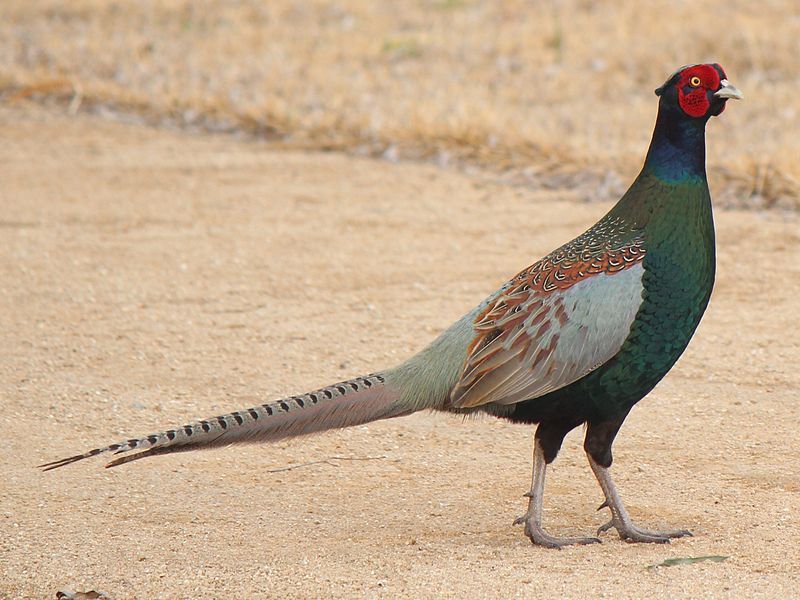
The green pheasant, or Japanese green pheasant, is an omnivorous bird native to the Japanese archipelago. This bird is unique to the region, meaning it is not found anywhere else in the world. It is also the national bird of Japan.
Some taxonomic authorities classify it as a subspecies of the common pheasant, Phasianus colchicus. This species is known to feed on both plant and animal matter. It is a medium-sized bird, with males usually measuring from about 50-63 cm in length.
Its plumage is primarily greenish-brown in color, and males also have a distinctive crest of feathers on their heads. The tail feathers are long and pointed, and its wings are broad and powerful. It is a truly beautiful bird and a symbol of Japanese culture.
| Kingdom | Animalia |
| Phylum | Chordata |
| Class | Aves |
| Order | Galliformes |
| Family | Phasianidae |
| Genus | Phasianus |
| Species | P. versicolor |
3. Whooper Swan
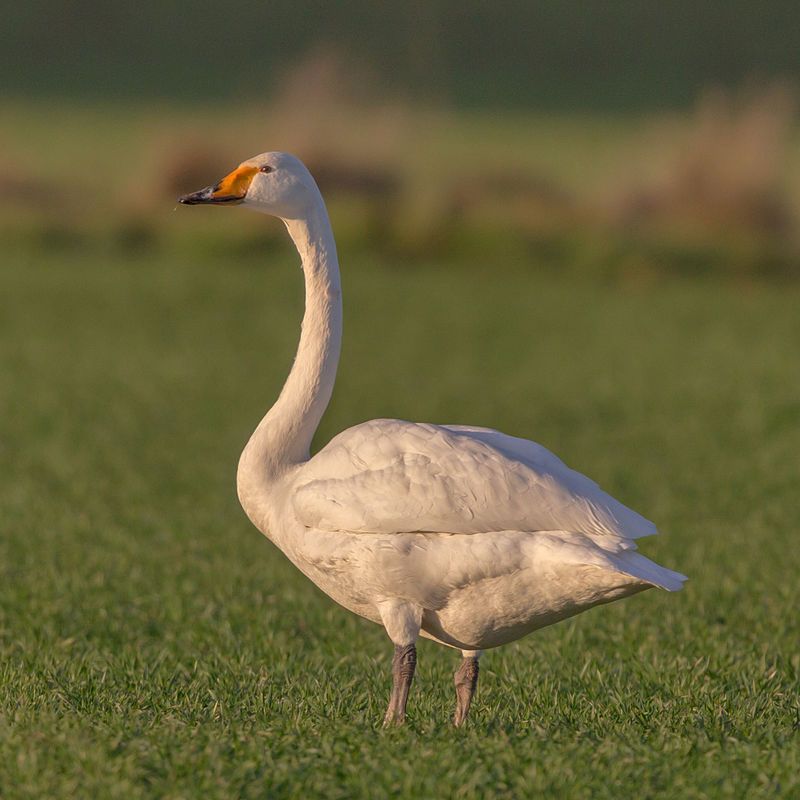
The whooper swan is a large waterfowl native to the northern hemisphere of the globe. It is also known as the common swan and is the type species of its genus, Cygnus. The whooper swan inhabits wetlands, lakes, and rivers in Europe and Asia.
It is closely related to the North American trumpeter swan and the two species share many similarities in their appearance and behavior. They are both large, white birds with black bills and legs, and they are both vocal, with a loud, trumpet-like call.
Both species are migratory, with the whooper swan travelling from its breeding grounds in the northern hemisphere to wintering areas in the southern hemisphere. In some areas, the two species can even be found together.
Both species are also threatened by habitat loss and water pollution. Conservation efforts are underway to protect these majestic birds and their habitats.
| Kingdom | Animalia |
| Phylum | Chordata |
| Class | Aves |
| Order | Anseriformes |
| Family | Anatidae |
| Genus | Cygnus |
| Species | C. cygnus |
4. Black-Tailed Gull
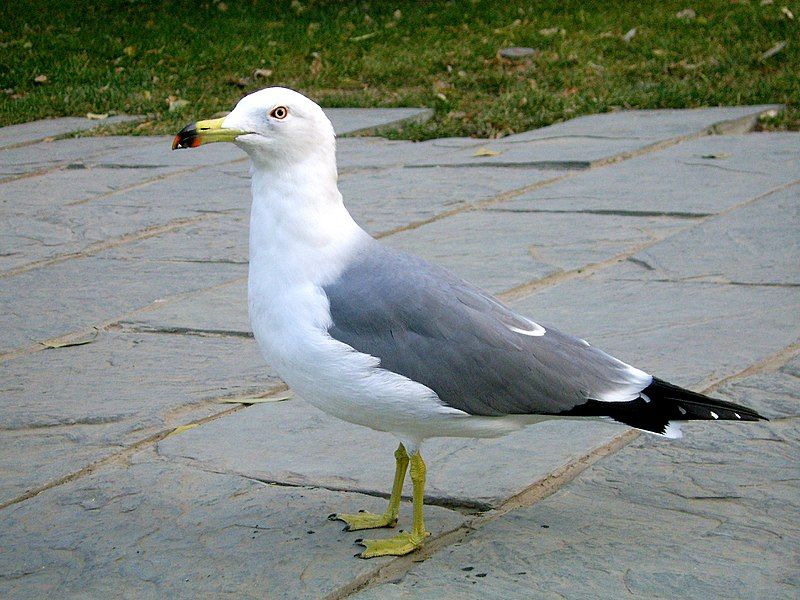
The black-tailed gull is a species of seabird that is native to the shorelines of East Asia. Its scientific name is Larus crassirostris. It is a medium-sized gull, about 50 cm (20 inches) in length, with a wingspan of about 140 cm (55 inches).
Its body is mainly white and gray, with a white head and a black tail, which is how it gets its name. It has a black bill and bright yellow legs.The black-tailed gull is most commonly found near the coast, along beaches, rivers, and estuaries.
It is an omnivorous species that feeds on a wide variety of food items, including fish, mollusks, crustaceans, insects, and small rodents.
During the breeding season, it constructs a shallow nest of plant materials and lays 1-3 eggs. The black-tailed gull is a fairly common species that has a wide range and is not considered threatened. However, it is still important to take steps to ensure its continued survival.
This includes reducing habitat loss, oil spills, fishing nets, and plastic pollution. With proper conservation efforts, the black-tailed gull can continue to thrive in its East Asian home for many years to come.
| Kingdom | Animalia |
| Phylum | Chordata |
| Class | Aves |
| Order | Charadriiformes |
| Family | Laridae |
| Genus | Larus |
| Species | L. crassirostris |
5. Little Grebe
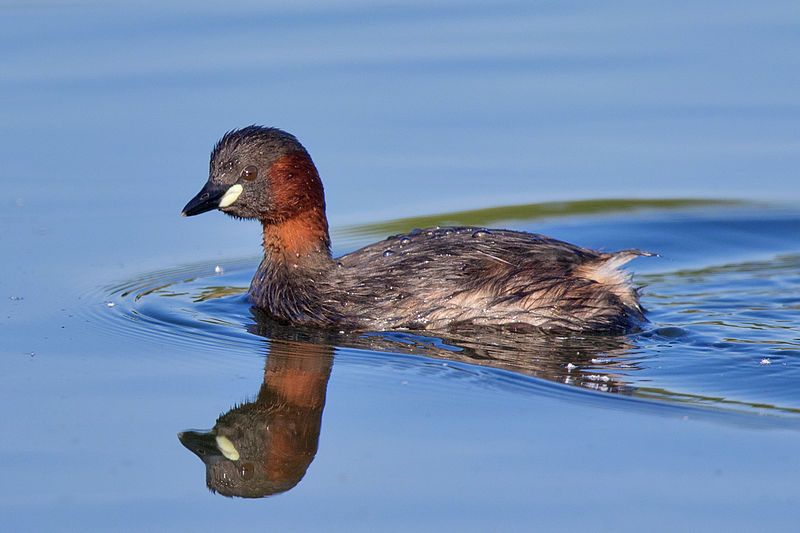
The little grebe, more commonly referred to as the dabchick, is a member of a family of water birds known as grebes. The genus of this bird is derived from the Ancient Greek words takhus and bapto, which roughly translate to “fast” and “to sink under” respectively.
The specific name of this species, ruficollis, comes from two Latin words: rufus, which means “red” and collis, which means “necked”. This is further derived from the Latin word collum, meaning “neck”.
This species of bird is easily identifiable due to its reddish neck plumage, which distinguishes it from other birds in the family.
| Kingdom | Animalia |
| Phylum | Chordata |
| Class | Aves |
| Order | Podicipediformes |
| Family | Podicipedidae |
| Genus | Tachybaptus |
| Species | T. ruficollis |
6. Mandarin Duck
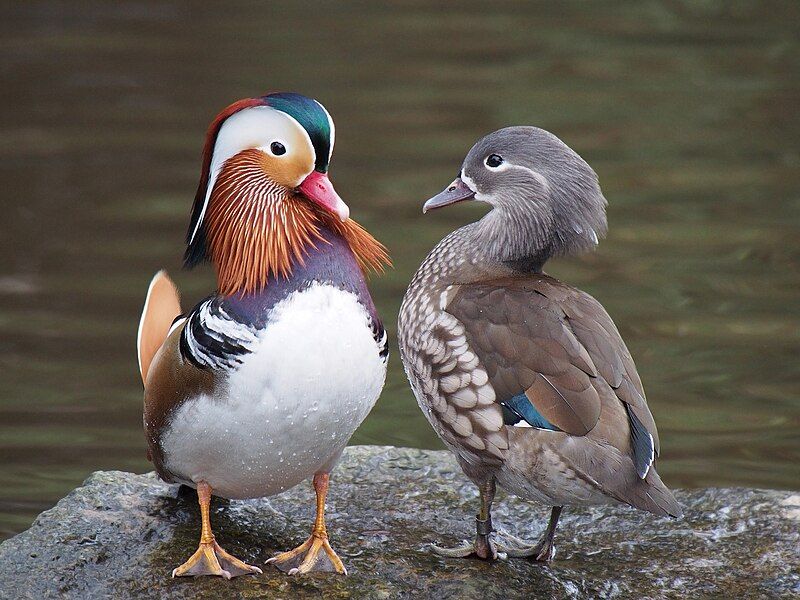
The mandarin duck is a species of perching duck that is native to the East Palearctic region. It is easily distinguishable by its unique coloration, with males showing a dramatic difference from females.
The mandarin duck is medium-sized, with an average length of 41–49 cm and a wingspan of 65–75 cm. It is closely related to the North American wood duck, which is the only other member of the genus Aix.
The males of the mandarin duck species are more brightly colored, with a deep red face and a chestnut body. The head of the drake is crested with a purple-red sheen that covers its neck and chest. The females, on the other hand, are a dull brown color.
Both male and female mandarin ducks have a white stripe on their wings and a white patch on their rumps. The mandarin duck is an aquatic species that feeds on vegetation, insects, and small crustaceans.
It is found in wooded areas near bodies of water, such as ponds, lakes, and rivers. The mandarin duck is a popular species for bird watching and is also kept as a pet in some parts of the world.
| Kingdom | Animalia |
| Phylum | Chordata |
| Class | Aves |
| Order | Anseriformes |
| Family | Anatidae |
| Genus | Aix |
| Species | A. galericulata |
7. Eastern Spot-Billed Duck
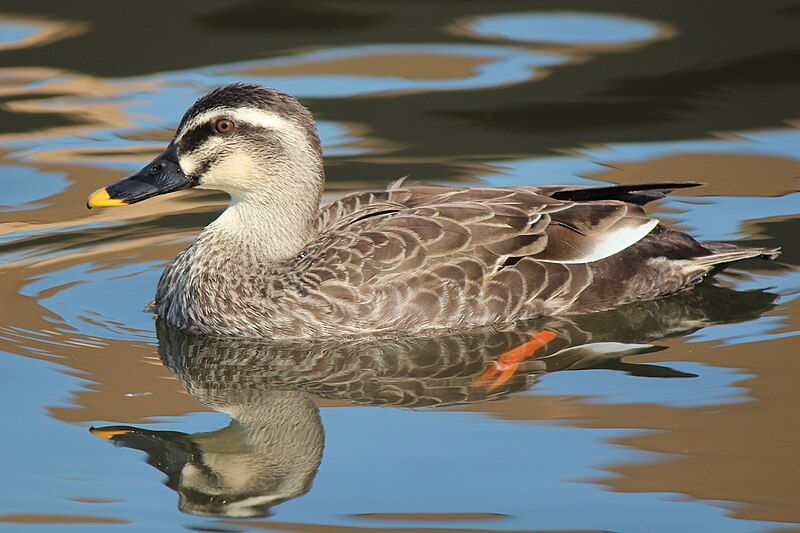
The eastern spot-billed duck, also known as the Chinese spot-billed duck, is a species of dabbling duck that is native to East and Southeast Asia.
Prior to being recognized as a distinct species, the eastern spot-billed duck was considered to be a subspecies of the Indian spot-billed duck, and both species were referred to collectively as the spot-billed duck.
This name is derived from the unique yellow spot that can be found on the bill of the eastern spot-billed duck. This yellow spot is a defining feature of the species and helps to distinguish it from other species of dabbling ducks.
The eastern spot-billed duck is a medium-sized duck, with males being larger than females. The head and neck of the eastern spot-billed duck are typically grey in colour, while its body is generally brownish-grey.
The wings of the eastern spot-billed duck have white-colored primary feathers, and the tail is black. The eastern spot-billed duck can be found in wetlands, flooded grasslands, and shallow lakes. It feeds mainly on aquatic plants, seeds, and other small animals.
| Kingdom | Animalia |
| Phylum | Chordata |
| Class | Aves |
| Order | Anseriformes |
| Family | Anatidae |
| Genus | Anas |
| Species | A. zonorhyncha |
8. Eurasian Teal
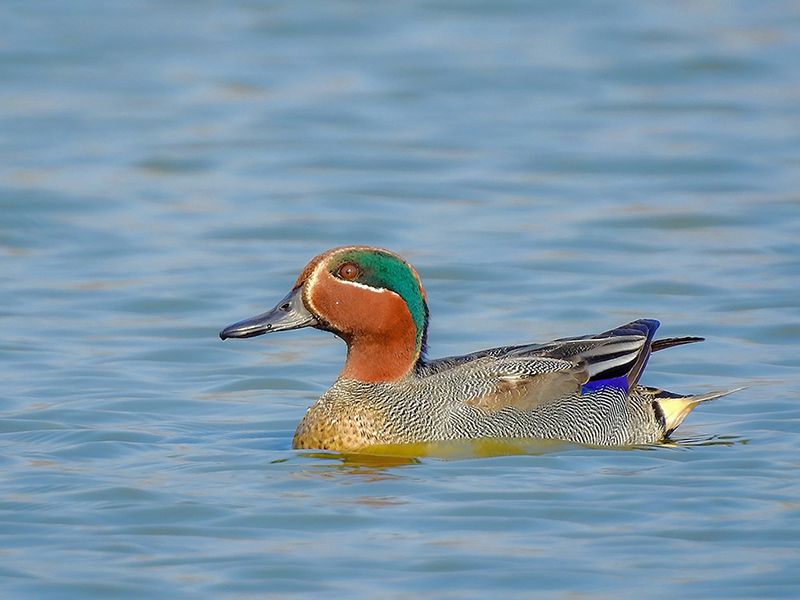
The Eurasian teal, also known as the common teal or Eurasian green-winged teal, is a species of duck that is found throughout temperate Eurosiberia.
It is a common and widespread species, and is the only one of these small dabbling ducks in much of its range, which is why it is often referred to simply as the “teal”. In the summer, the Eurasian teal will breed in its temperate Eurosiberian range.
When winter approaches, the teal will migrate south in order to find more suitable habitats, such as warmer climates. This species of duck is very adaptable and can be found in a variety of habitats, including marshes, lakes, ponds, and rivers.
The Eurasian teal is a medium-sized duck, with a small head, short neck, and a compact body. It has a bright green head, white breast, and brown back. The male and female are quite similar in appearance, with the male having a more vibrant coloration.
The Eurasian teal is an omnivore, feeding on a variety of insects, aquatic invertebrates, and plant material. It is known to forage in shallow water, along the edges of wetlands, and in fields.
This species of duck is also known to form large flocks when migrating, which can consist of thousands of individuals. Overall, the Eurasian teal is a common and widespread species of duck that breeds in temperate Eurosiberia and migrates south in winter.
It is a highly adaptable species, able to live in a variety of habitats and feed on a variety of food sources. The teal is a very important species in its range, and is often referred to simply as the “teal”.
| Kingdom | Animalia |
| Phylum | Chordata |
| Class | Aves |
| Order | Anseriformes |
| Family | Anatidae |
| Genus | Anas |
| Species | A. crecca |
9. Lesser Cuckoo
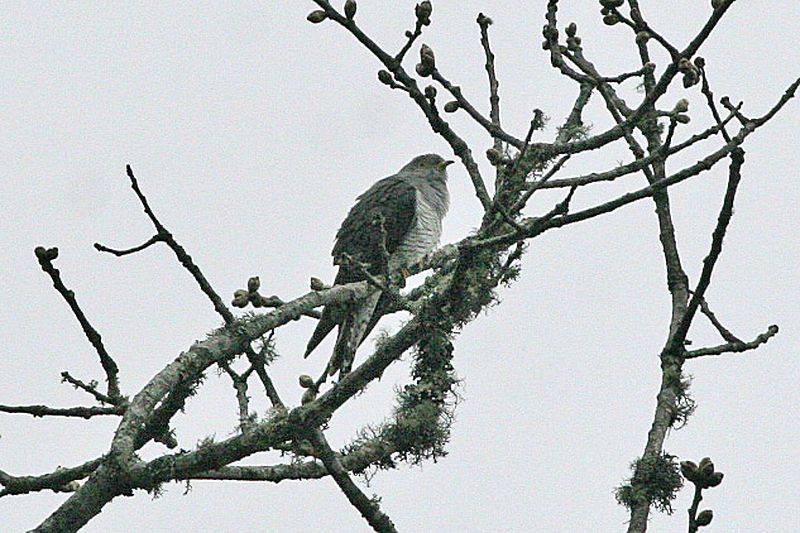
The lesser cuckoo is a species of bird that belongs to the family of Cuculidae. It is native to many countries across the world, including Bangladesh, Bhutan, China, Democratic Republic of the Congo, Hong Kong, India, Japan, Kenya, North Korea, and South Korea.
This species of cuckoo is small in size, with a length of about 20 cm and a wingspan of 30 cm. It has a slender body with greyish-brown upperparts and pale greyish-white underparts. It has black and white wings and a long and curved beak.
The lesser cuckoo is predominantly a migratory species, travelling across the countries mentioned above during the cold season. It mainly feeds on insects and other invertebrates, as well as small reptiles and amphibians.
The lesser cuckoo nests in the trees, where it lays its eggs and raises its young. This species of cuckoo is classified as near threatened by the International Union for Conservation of Nature (IUCN).
The main threats to this bird are habitat destruction, pollution, and illegal hunting. Conservation efforts should be undertaken to protect the lesser cuckoo and its natural habitat.
| Kingdom | Animalia |
| Phylum | Chordata |
| Class | Aves |
| Order | Cuculiformes |
| Family | Cuculidae |
| Genus | Cuculus |
| Species | C. poliocephalus |
10. Common Cuckoo
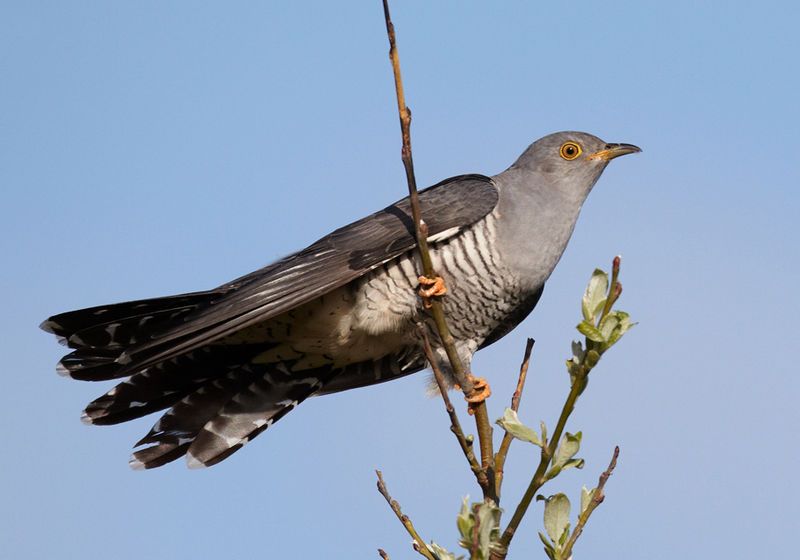
The common cuckoo is a migratory bird that belongs to the Cuculiformes order of birds, which includes a variety of species such as roadrunners, anis, and coucals. This species is found in Europe and Asia during the summer months, where it migrates.
In the winter, the common cuckoo migrates to Africa, where it spends the colder months. The common cuckoo is a small bird, with a greyish-brown body, barred wings, and a long tail.
Its beak is short and curved, and its legs are short and weak, which makes it difficult for it to take off from the ground.
It has a distinctive call, which is a repetitive ‘cuckoo’, often heard in the spring. The common cuckoo feeds mainly on insects and other small invertebrates, which it catches on the ground or in the air. It also eats small fruits, seeds, and berries.
It nests in trees, either in a hole in the trunk or in a nest made by another bird. The common cuckoo is a solitary bird and is not usually seen in flocks. It is a shy bird, and will often fly away when approached.
It is also a shy breeder and does not usually breed in a colony.
However, it does form pairs in the breeding season, and the male will often feed the female during incubation.The common cuckoo is an important part of the ecosystem, as it helps to control insect populations, which helps to keep the environment balanced.
It is an interesting bird to observe, and its distinctive call can be heard throughout its range.
| Kingdom | Animalia |
| Phylum | Chordata |
| Class | Aves |
| Order | Cuculiformes |
| Family | Cuculidae |
| Genus | Cuculus |
| Species | C. canorus |
11. White-Bellied Green Pigeon
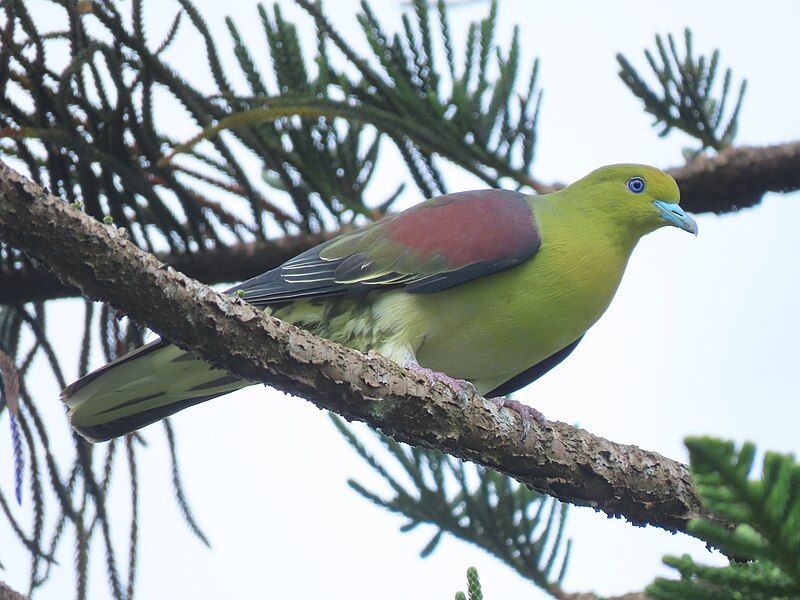
The White-bellied Green Pigeon is a species of bird belonging to the family Columbidae. It is a species which is found in many countries in Asia, including China, Japan, South Korea, Laos, Russia, Taiwan, Thailand, India, and Vietnam.
Its natural habitat is that of temperate forests, which provide it with a suitable climate and environment to survive. This species of pigeon is quite well-known for its interesting habit of drinking saltwater.
This is quite unique behavior amongst birds, as some species have been observed to drink saltwater from ocean shores, but this species of pigeon has been seen to do so even in inland areas where there is no access to the ocean.
This is thought to be an adaptation the pigeon has developed in order to obtain essential minerals and electrolytes which are not available in other sources of freshwater.
The White-bellied Green Pigeon is a species which is considered to be of Least Concern on the IUCN Red List, due to its widespread distribution and large population size.
However, it is still important to ensure that its natural habitat is preserved, as this is essential for its survival in the wild.
| Kingdom | Animalia |
| Phylum | Chordata |
| Class | Aves |
| Order | Columbiformes |
| Family | Columbidae |
| Genus | Treron |
| Species | T. sieboldii |
12. Kentish Plover
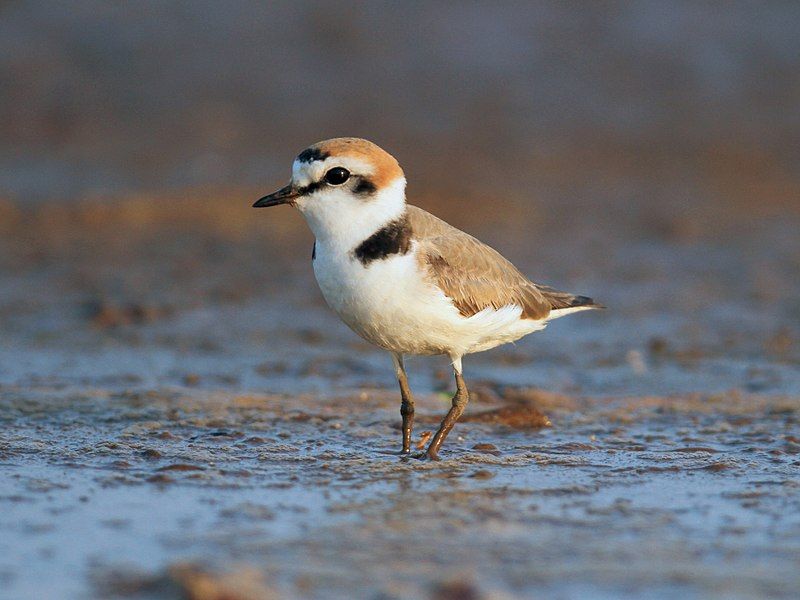
The Kentish Plover is a species of bird that is found all over the world. It belongs to the family Charadriidae which includes a variety of shorebirds. The Kentish Plover is small in size and primarily breeds on the shores of saline lakes, lagoons, and coasts.
It is an adaptable species that can be found in a variety of habitats, from sand dunes, marshes, semi-arid deserts, and even tundra regions.
These birds typically nest on the ground, and they have a unique feeding pattern which involves them running and stopping while foraging for food. They feed on small insects, worms, and other invertebrates.
It is not uncommon to find large flocks of Kentish Plovers during the breeding season. These birds play an important role in the ecosystem by consuming insects that may otherwise damage crops.
| Kingdom | Animalia |
| Phylum | Chordata |
| Class | Aves |
| Order | Charadriiformes |
| Family | Charadriidae |
| Genus | Charadrius |
| Species | C. alexandrinus |
13. Eurasian Coot
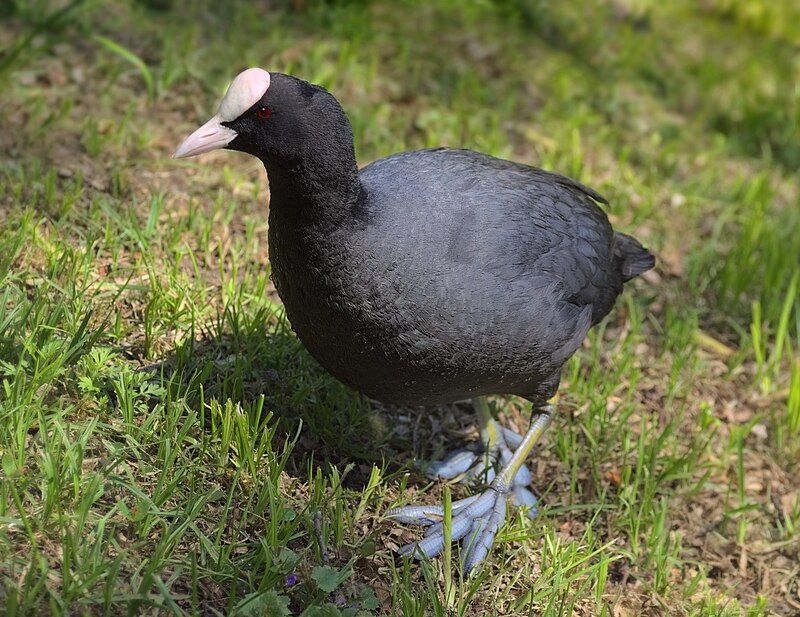
The Eurasian coot, also known as the common coot or Australian coot, is a species of rail and crake bird belonging to the Rallidae family. It is widely distributed across Europe, Asia, Australia, New Zealand and parts of North Africa.
This species has a distinctive appearance, with a slaty-black body, glossy black head, and a white bill with a white frontal shield. It is a common waterbird, often seen swimming on ponds, lakes and marshes.
It feeds on aquatic plants and insects and can be seen foraging for food in shallow waters. They are known to be quite social, often moving in flocks and nesting in colonies.
The Eurasian coot is considered to be of least concern, as its population is stable and widespread throughout its range.
| Kingdom | Animalia |
| Phylum | Chordata |
| Class | Aves |
| Order | Gruiformes |
| Family | Rallidae |
| Genus | Fulica |
| Species | F. atra |
14. Black-Headed Gull
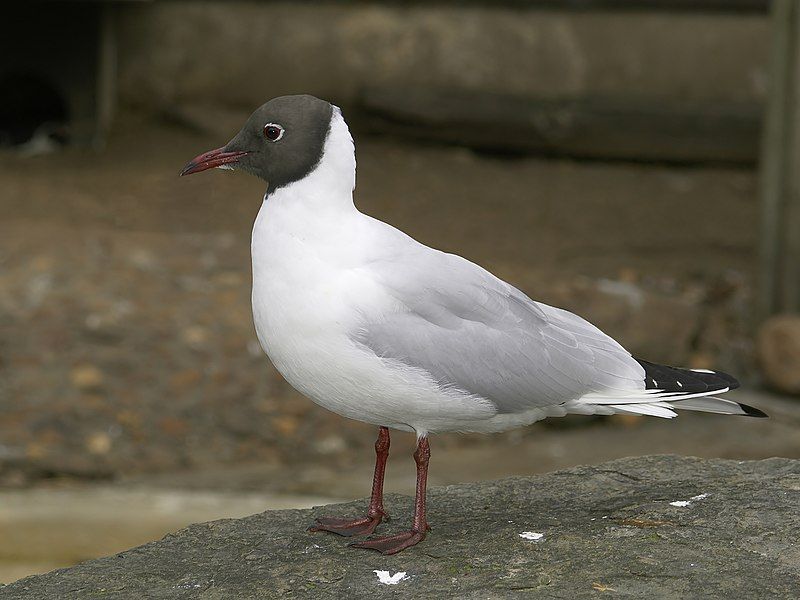
The black-headed gull is a small species of gull that is found in many parts of the Palearctic, a region that comprises Europe and coastal eastern Canada. This species of gull is migratory in nature, with most of the population migrating south during the winter months.
However, some of the birds remain in the milder parts of Europe year-round. These birds are usually found near the coast, where they feed on fish, insects, and other small invertebrates.
The black-headed gull is an important species in the region, providing food for other species and helping to maintain the local ecosystem. It is also a popular species with bird watchers, as it is relatively easy to spot in its coastal habitats.
| Kingdom | Animalia |
| Phylum | Chordata |
| Class | Aves |
| Order | Charadriiformes |
| Family | Laridae |
| Genus | Chroicocephalus |
| Species | C. ridibundus |
15. Long-Billed Plover
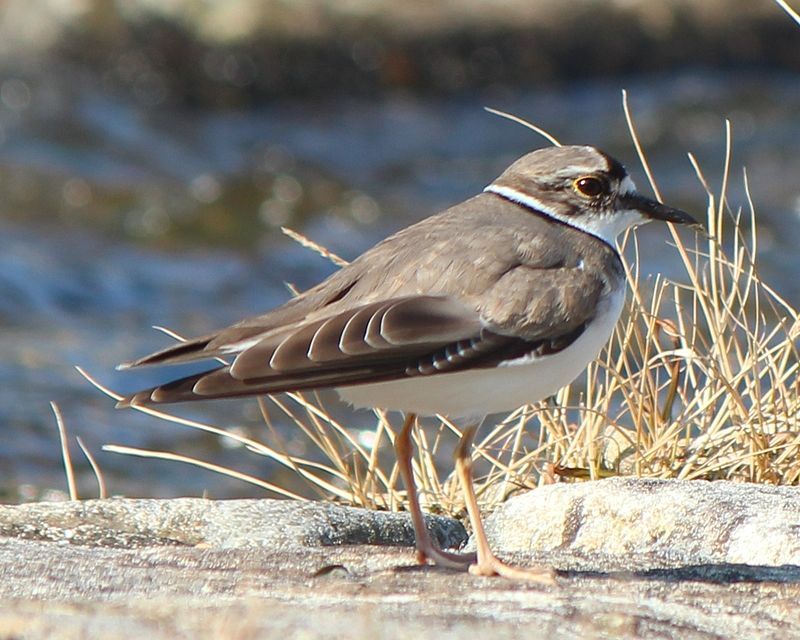
The long-billed plover is a species of wading bird belonging to the Charadriidae family of birds.
This species can be found in a wide range of countries in South and East Asia, including Bangladesh, Bhutan, Brunei, Cambodia, China, Hong Kong, India, Indonesia, Japan, Laos, Malaysia, Mongolia, Myanmar, Nepal, North Korea, Russia, South Korea, Sri Lanka, Taiwan, Thailand, and Vietnam.
The long-billed plover is a medium-sized bird, typically ranging between 20 to 25 centimeters in length. Its upperparts are grey-brown, with a dark crown and white belly. It has a long, slender bill, which is usually yellow in color with a black tip.
Its legs are yellowish-brown and its tail is short and rounded.The long-billed plover usually inhabits areas close to water, such as wetlands, rivers, and estuaries. They mainly feed on insects, but may also eat small fish, earthworms, and other small invertebrates.
Breeding typically takes place during the summer months, and the female will lay 1-4 eggs in a nest on the ground.
The young are fledged after about 3 weeks. Overall, the long-billed plover is a species of bird which is found in a wide range of countries across South and East Asia. They inhabit areas close to water and mainly feed on insects.
Breeding typically takes place during the summer months, with the female laying 1-4 eggs in a nest on the ground.
| Kingdom | Animalia |
| Phylum | Chordata |
| Class | Aves |
| Order | Charadriiformes |
| Family | Charadriidae |
| Genus | Charadrius |
| Species | C. placidus |
16. Common Moorhen
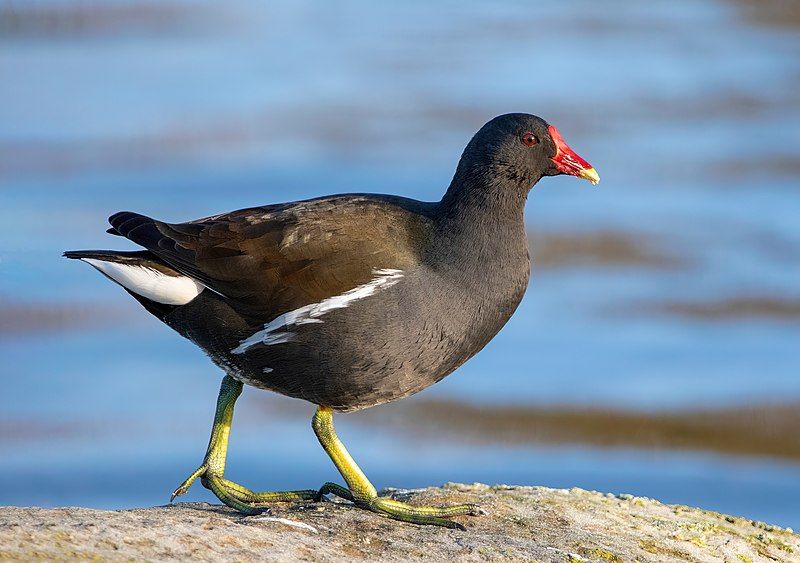
The common moorhen, also known as the waterhen or swamp chicken, is a species of bird in the rail family. It is native to many parts of the Old World, including Europe, Africa, and parts of Asia.
The common moorhen is a wetland-dependent species, and it is most commonly found in well-vegetated marshes, ponds, canals, and other wetlands. It prefers shallow waters, and can often be seen swimming in the shallows or foraging along the water’s edge for food.
The moorhen is an omnivorous species, and its diet consists mainly of plant material, insects, and aquatic invertebrates. With its strong feet and claws, the moorhen is an adept swimmer and can often be seen dabbling in the shallows.
It is also a capable flyer, and it uses flight to escape from predators. The moorhen is an important species in many ecosystems, and its presence serves as an indicator of healthy wetlands.
| Kingdom | Animalia |
| Phylum | Chordata |
| Class | Aves |
| Order | Gruiformes |
| Family | Rallidae |
| Genus | Gallinula |
| Species | G. chloropus |
17. Mallard
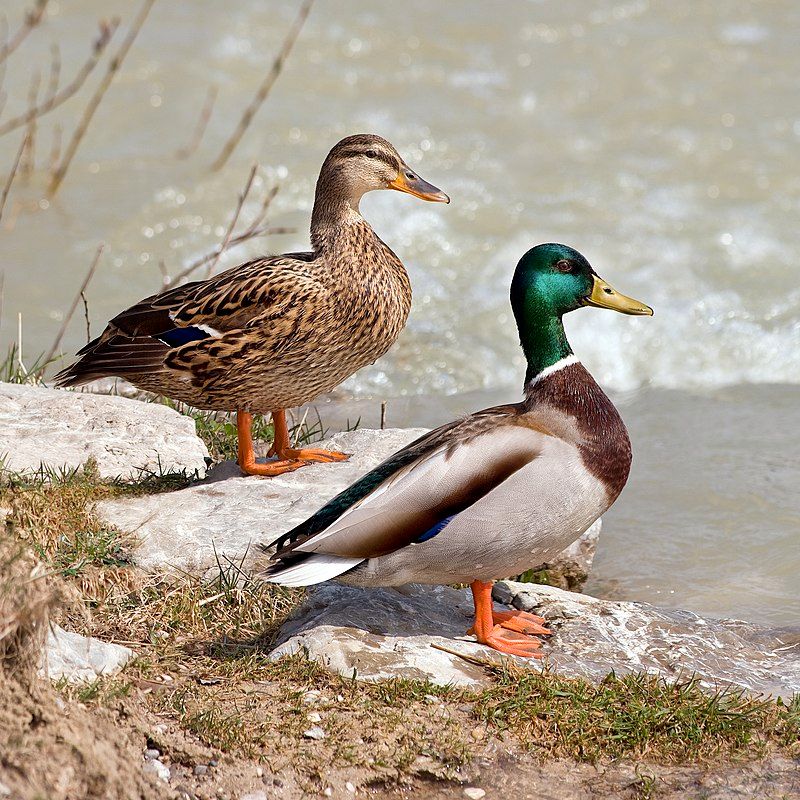
The mallard or wild duck is a species of duck that is found in a wide variety of habitats around the world. It is a dabbling duck, meaning that it feeds on the surface of the water or feeds on aquatic plants.
The mallard is native to the temperate and subtropical regions of the Americas, Eurasia, and North Africa, and has been introduced to other parts of the world, such as New Zealand, Australia, Peru, Brazil, Uruguay, Argentina, Chile, Colombia, the Falkland Islands, and South Africa.
This species has adapted well to human presence and can be found in both wild areas, as well as in urban parks and other man-made habitats. The Mallard is an important species to many local ecosystems and is a popular game bird for hunting.
| Kingdom | Animalia |
| Phylum | Chordata |
| Class | Aves |
| Order | Anseriformes |
| Family | Anatidae |
| Genus | Anas |
| Species | A. platyrhynchos |
18. Oriental Cuckoo
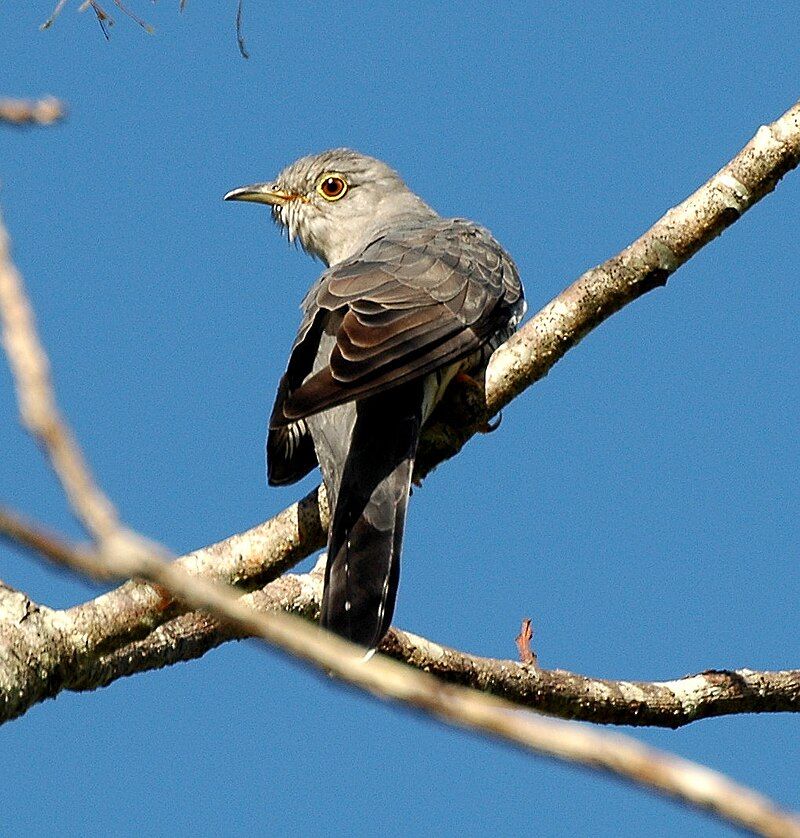
The Oriental cuckoo (Cuculus horsfieldi) is a species of bird belonging to the cuckoo family, Cuculidae. It is found in eastern Asia, ranging from India to China and Japan.
It is a fairly large bird, measuring roughly 12 inches in length, and is greyish-brown in color with a white throat and breast.
The Oriental cuckoo has a distinctive call, which is a loud and repetitive “coo-coo-coo” sound. This species was formerly classified as a subspecies of the Himalayan cuckoo, and was then called the ‘Oriental cuckoo’.
This species is quite distinct from the Himalayan cuckoo in appearance, but the two species share the same distinctive call.
The two species also occupy the same range and have a similar diet, which consists mainly of insects and other invertebrates. The Oriental cuckoo is a migratory species, spending the winter in the tropics and returning to its breeding grounds in the summer.
It breeds in deciduous and evergreen forests and is often seen perching on open tree branches or hovering near the ground in search of food.
The Oriental cuckoo is an important bird in its native range, as it helps to control insect populations and serves as an important food source for predators and other animals.
| Kingdom | Animalia |
| Phylum | Chordata |
| Class | Aves |
| Order | Cuculiformes |
| Family | Cuculidae |
| Genus | Cuculus |
| Species | C. optatus |
19. Bull-Headed Shrike
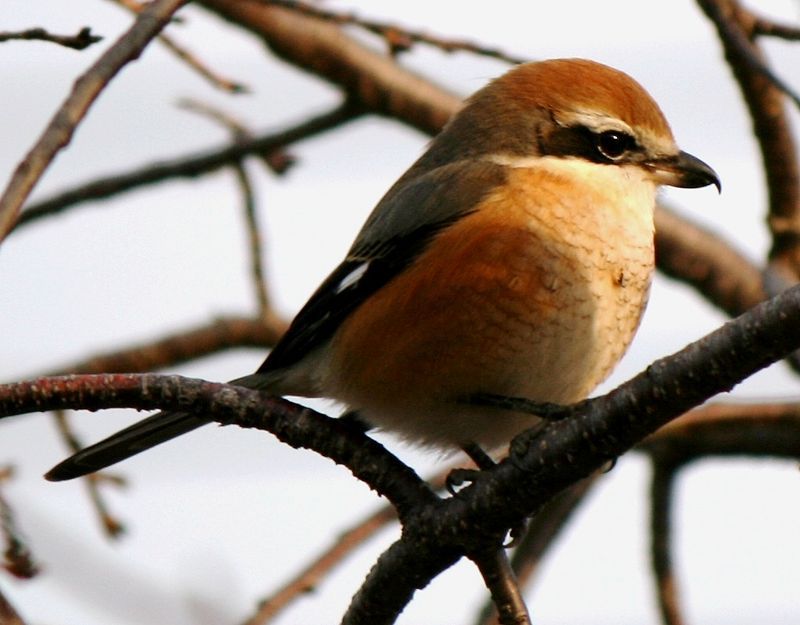
The bull-headed shrike is a species of bird native to eastern Asia that belongs to the shrike family, Laniidae. It is approximately 19-20 cm in length and is easily recognized by its distinct features – a brown crown, white eyebrow, and black mask.
The back of the bird is a grey-brown color, while its wings are dark and feature a white patch. The bull-headed shrike is a carnivorous bird which feeds on insects, small reptiles, and rodents.
It can also be a territorial species, with males defending their territories and chasing away intruders. Furthermore, the bull-headed shrike is known for its unique habit of impaling its prey on thorns and other sharp objects.
This behavior is an adaptation that allows the bird to store food for feeding at a later time. This bird is considered to be quite rare, with its population decreasing due to habitat loss and trapping for the pet trade.
| Kingdom | Animalia |
| Phylum | Chordata |
| Class | Aves |
| Order | Passeriformes |
| Family | Laniidae |
| Genus | Lanius |
| Species | L. bucephalus |
20. Little Ringed Plover
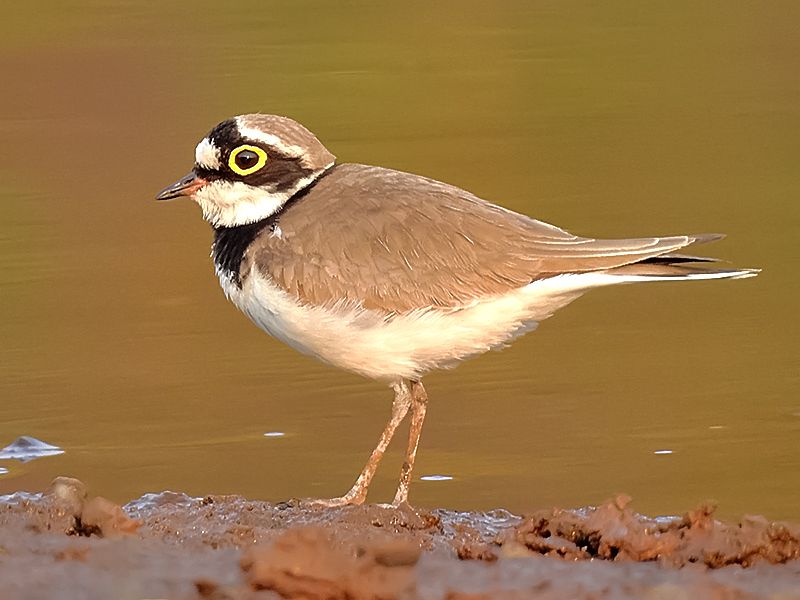
The little ringed plover is a species of small wading bird native to Europe, Asia, and Africa. It belongs to the genus Charadrius, which is derived from the Late Latin word for a yellowish bird mentioned in the fourth-century Vulgate.
This Latin word can be traced back to the Ancient Greek term kharadrios, which refers to a bird found in river valleys.
The little ringed plover is one of the most common species of plover, and has a distinctive black and white head, with a white-edged black band around its neck. It has a white belly, and the wings and back are brown with black markings.
The little ringed plover is highly adaptable and can be found in a variety of habitats, including wetlands, grasslands, and shorelines. It feeds mainly on insects, but also eats worms, crustaceans, and some plant material.
It is considered a pest species in some parts of the world, as it can damage crops and other vegetation. Despite this, the little ringed plover is a valuable part of the natural ecosystem, and is an important food source for many other species.
| Kingdom | Animalia |
| Phylum | Chordata |
| Class | Aves |
| Order | Charadriiformes |
| Family | Charadriidae |
| Genus | Charadrius |
| Species | C. dubius |
21. Eurasian Woodcock
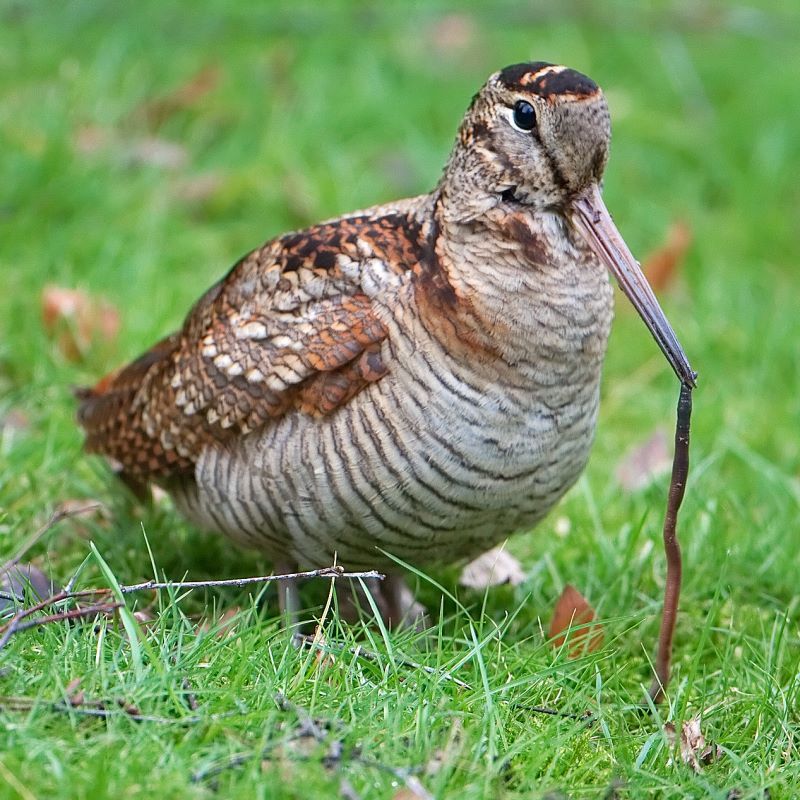
The Eurasian woodcock is a unique bird, found primarily in temperate and subarctic areas of Eurasia. It has adapted to its woodland habitat by having a camouflage-like plumage of reddish-brown and buff-coloured feathers.
This type of colouring helps the bird blend in with its surroundings, providing it with protection from predators. The upper parts are a reddish-brown colour, while the underparts are a buff colour.
This camouflage-like colouring helps the bird blend in with its surrounding environment. The Eurasian woodcock is a medium-sized wading bird, with a slender, long bill. It is a ground-dwelling species, usually found in open woodland areas.
It feeds mainly on earthworms and other invertebrates which it can find in the soil. The diet of the Eurasian woodcock also includes some plant matter, such as fruits and berries. The Eurasian woodcock is a solitary species and is usually seen alone or in small groups.
During the breeding season, the males perform a courtship flight over the breeding grounds, making a distinctive ‘peenting’ call. This call is used to attract females and to establish territories.
The Eurasian woodcock nests on the ground, in a shallow depression lined with dry leaves and grass. The female incubates the eggs and cares for the young. The Eurasian woodcock is an important species, as it helps maintain the balance of the woodland ecosystem.
Foraging on the ground, it helps to keep the soil aerated and to promote healthy plant growth. In addition, it also helps to control the populations of certain invertebrates, such as earthworms.
This helps to keep the woodland in balance and to ensure that there is enough food for other species.
| Kingdom | Animalia |
| Phylum | Chordata |
| Class | Aves |
| Order | Charadriiformes |
| Family | Scolopacidae |
| Genus | Scolopax |
| Species | S. rusticola |
22. Slaty-Backed Gull
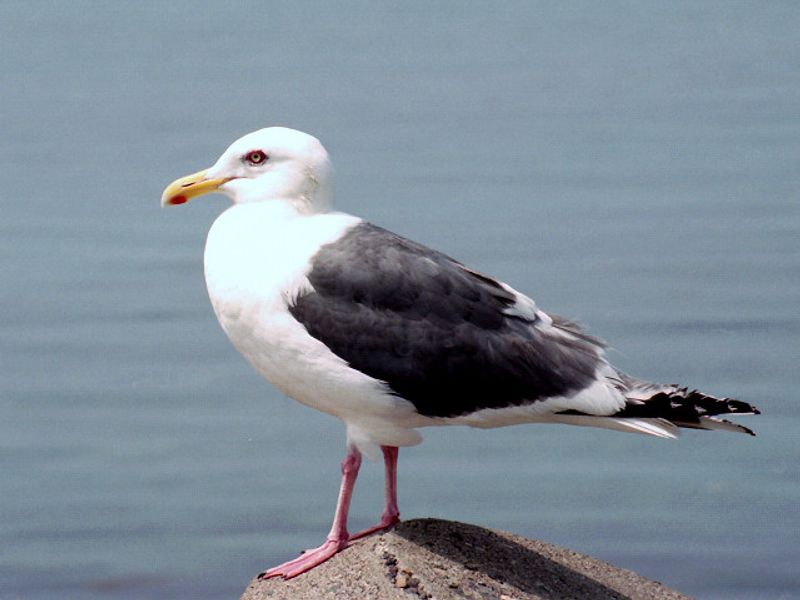
The slaty-backed gull is a large white-headed species of gull that is found in the northeastern parts of the Palearctic region. During nonbreeding seasons, these birds travel widely, often venturing far from their breeding grounds.
In terms of appearance, the slaty-backed gull is quite similar to two other species of gull: the western gull and the glaucous-winged gull. These three species share many of the same physical characteristics, which makes them hard to tell apart.
For instance, all three have white heads and wings, and they all have similar proportions size,s and shapes. However, the slaty-backed gull is somewhat distinct from the other two species due to its dark gray back.
This darker coloration helps to differentiate it from the western and glaucous-winged gulls.
| Kingdom | Animalia |
| Phylum | Chordata |
| Class | Aves |
| Order | Charadriiformes |
| Family | Laridae |
| Genus | Larus |
| Species | L. schistisagus |
23. Rock Dove
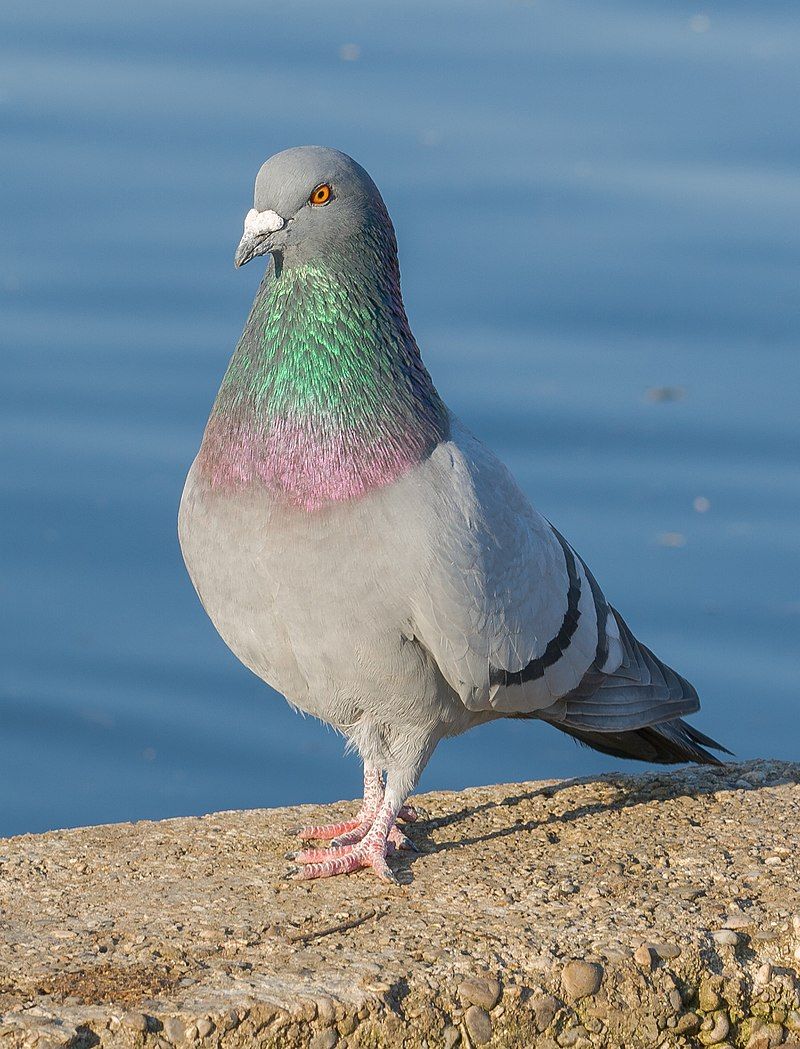
The rock dove, also known as the rock pigeon or common pigeon, is a species of bird that is part of the Columbidae family. It is the wild ancestor of the domestic pigeon, and is often referred to simply by the name “pigeon”.
Due to the ease with which the domestic pigeon has adapted to living in cities, many of these birds have escaped domestication and can now be found living in the wild. This has led to an increase in the number of feral pigeons living around the world.
Feral pigeons are able to thrive in urban environments, where they can feed on scraps of food and find places to nest. They are also able to breed quickly, resulting in a large number of feral pigeons living in cities.
| Kingdom | Animalia |
| Phylum | Chordata |
| Class | Aves |
| Order | Columbiformes |
| Family | Columbidae |
| Genus | Columba |
| Species | C. livia |
24. Common Pochard
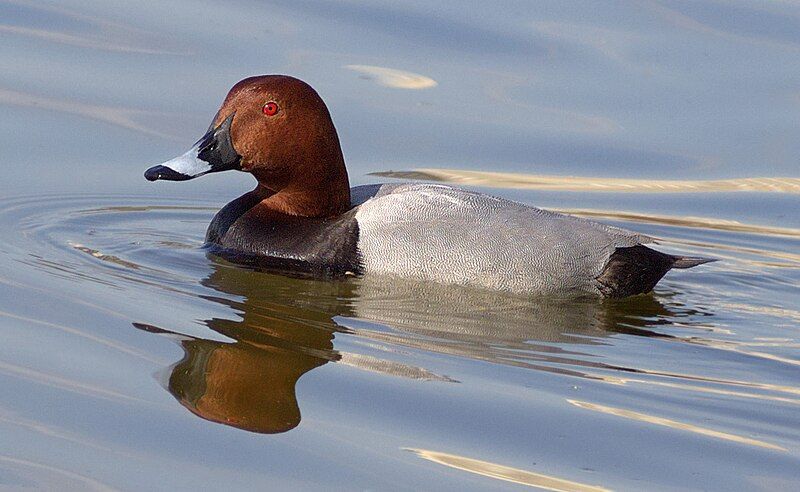
The common pochard is a species of diving duck that is found throughout a number of countries. Its scientific name, Aythya ferina, is derived from the ancient Greek word aithuia, which was used to refer to an unidentified seabird by authors such as Hesychius and Aristotle.
The second part of the scientific name, ferina, is derived from the Latin word ferus, which means “wild”. This is in reference to the common pochard’s status as a wild game, which is hunted for its meat and feathers.
The common pochard is a medium-sized duck with a distinctive black head and neck, a grey-brown chest, and a white underside. Males can be identified by their bright red eyes, while females have brown eyes.
Its diet consists mainly of aquatic vegetation, aquatic insects, small fish, and mollusks. The common pochard is a sociable bird, often seen in large flocks during migration. Due to their status as game birds, common pochards are vulnerable to hunting.
Other threats to their populations include pollution, loss of wetland habitats, and climate change. As a result, conservation efforts have been put in place to protect this species and help ensure its survival.
| Kingdom | Animalia |
| Phylum | Chordata |
| Class | Aves |
| Order | Anseriformes |
| Family | Anatidae |
| Genus | Aythya |
| Species | A. ferina |
Conclusion
Aomori is a great place to witness the beauty of birds, with a variety of species inhabiting the region. Many of these birds are migratory, meaning they can be seen in various seasons.
Whether one is a bird enthusiast or a casual observer, Aomori has something to offer everyone.